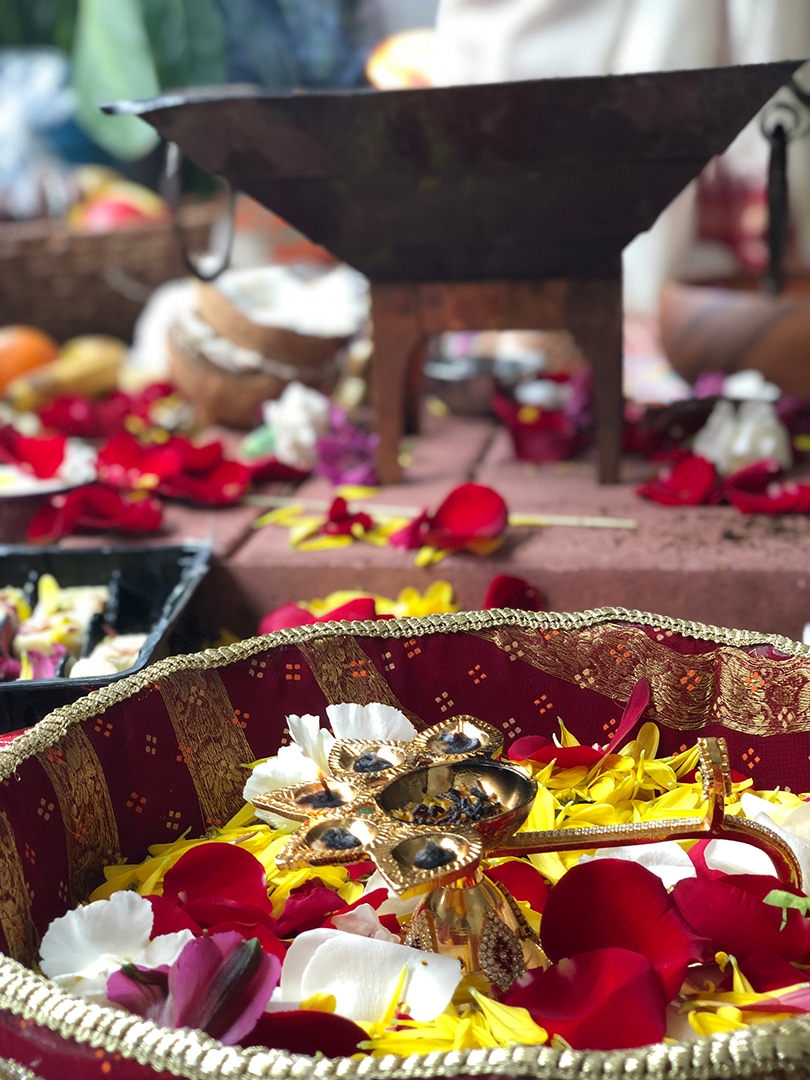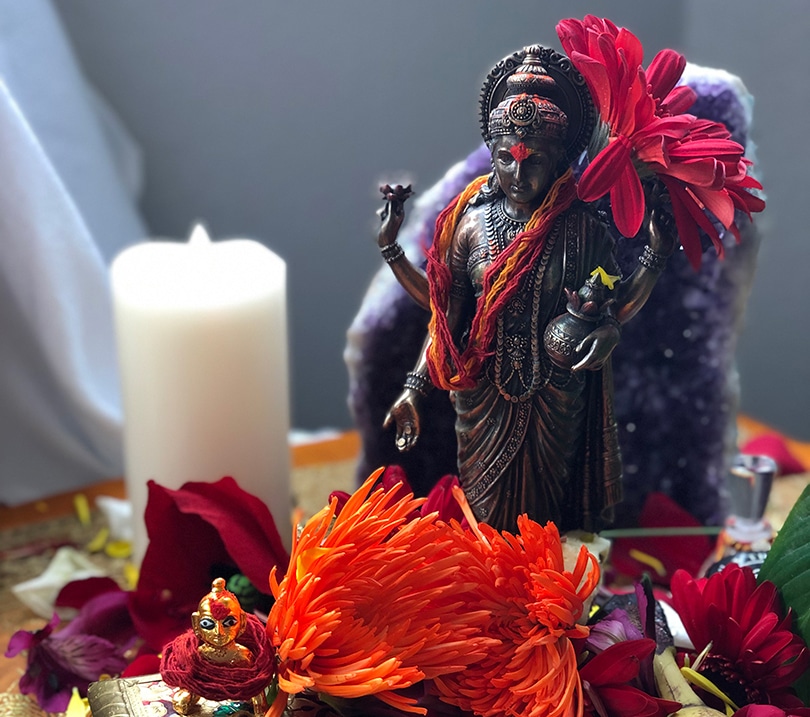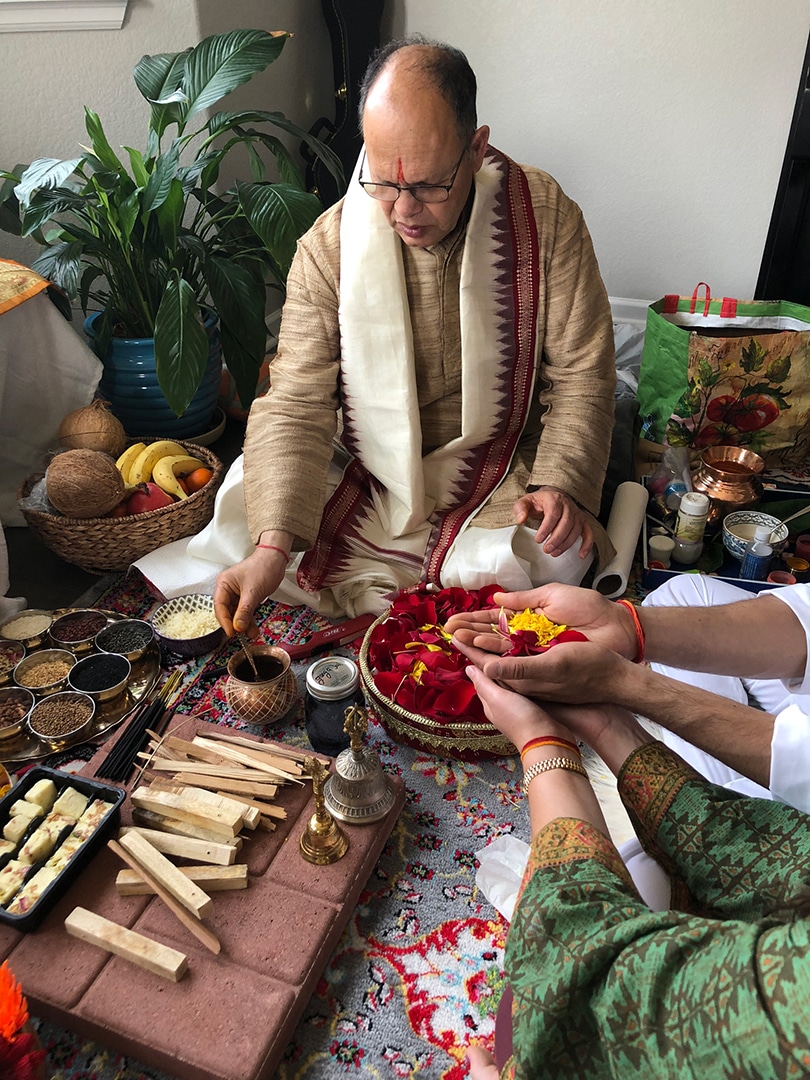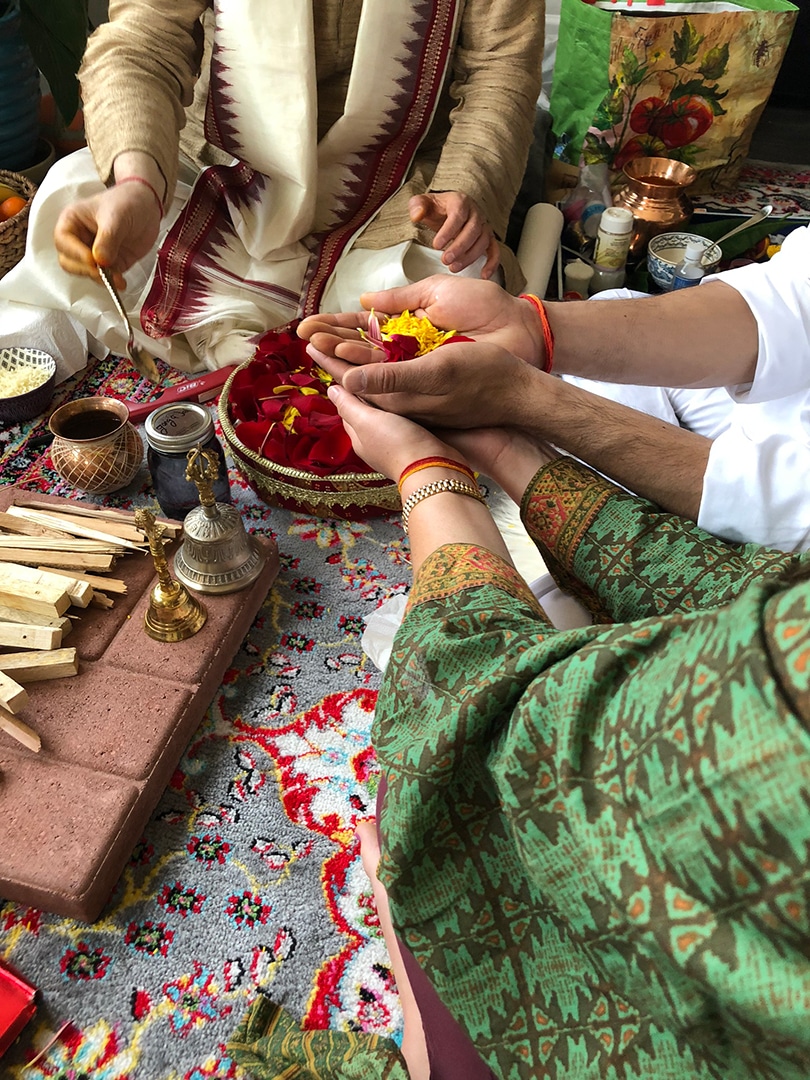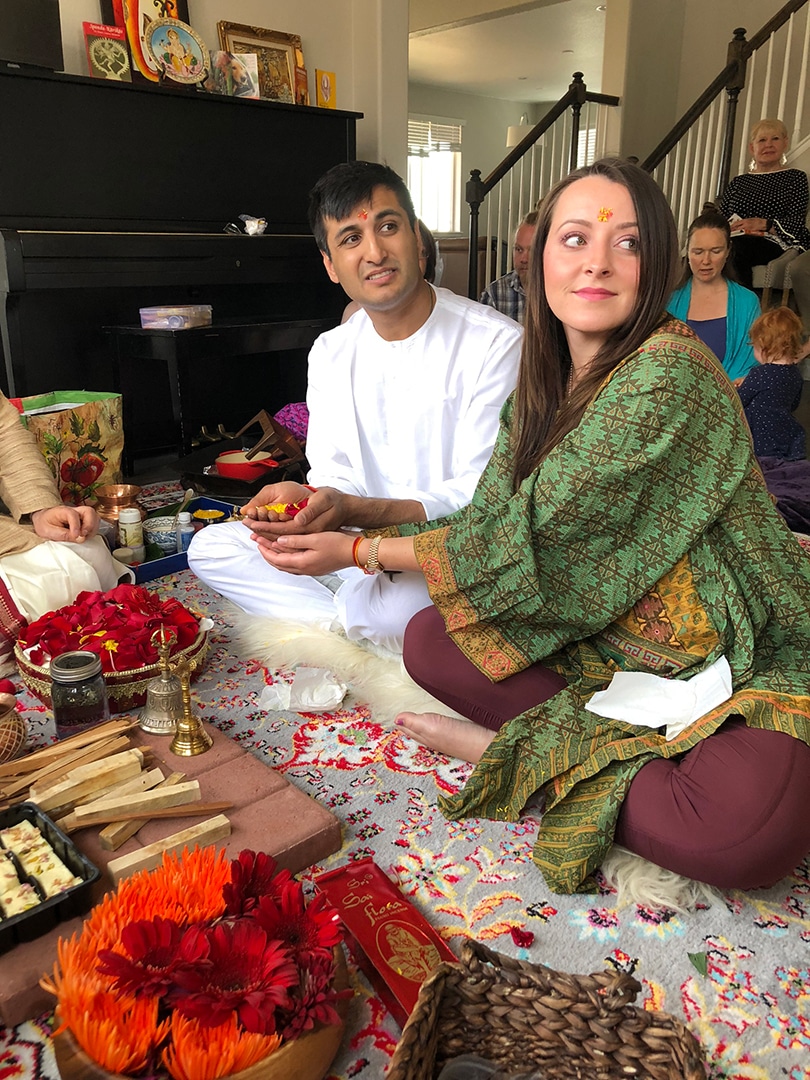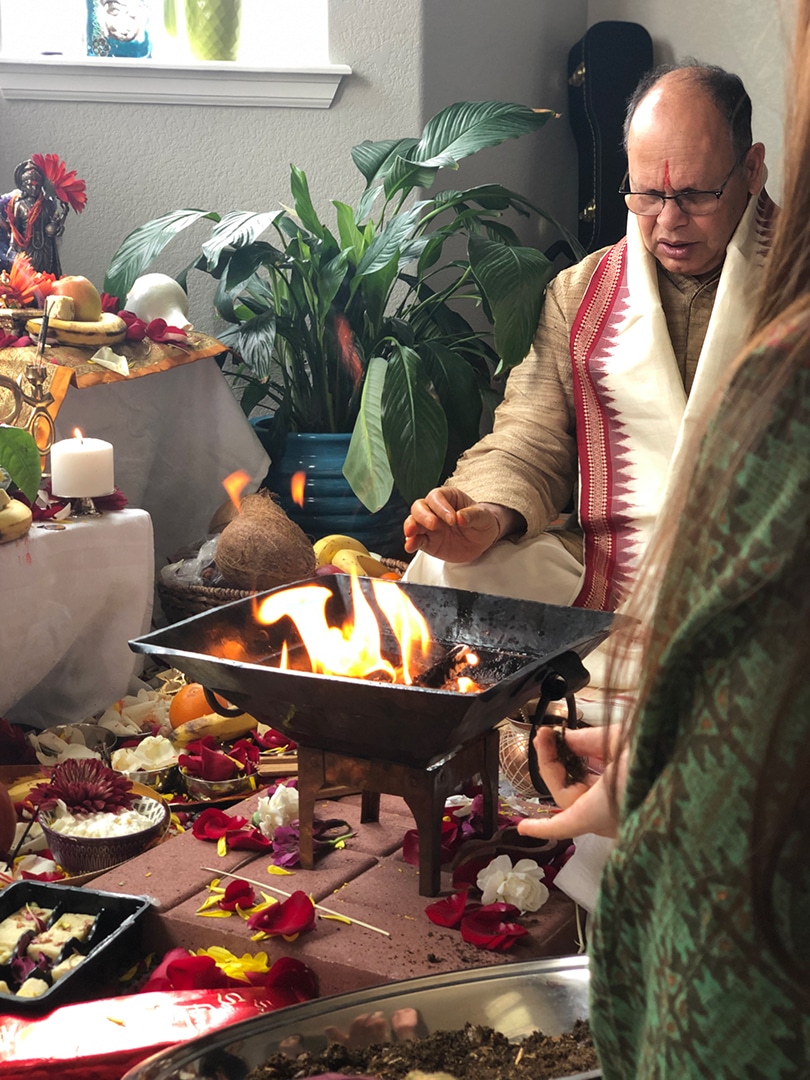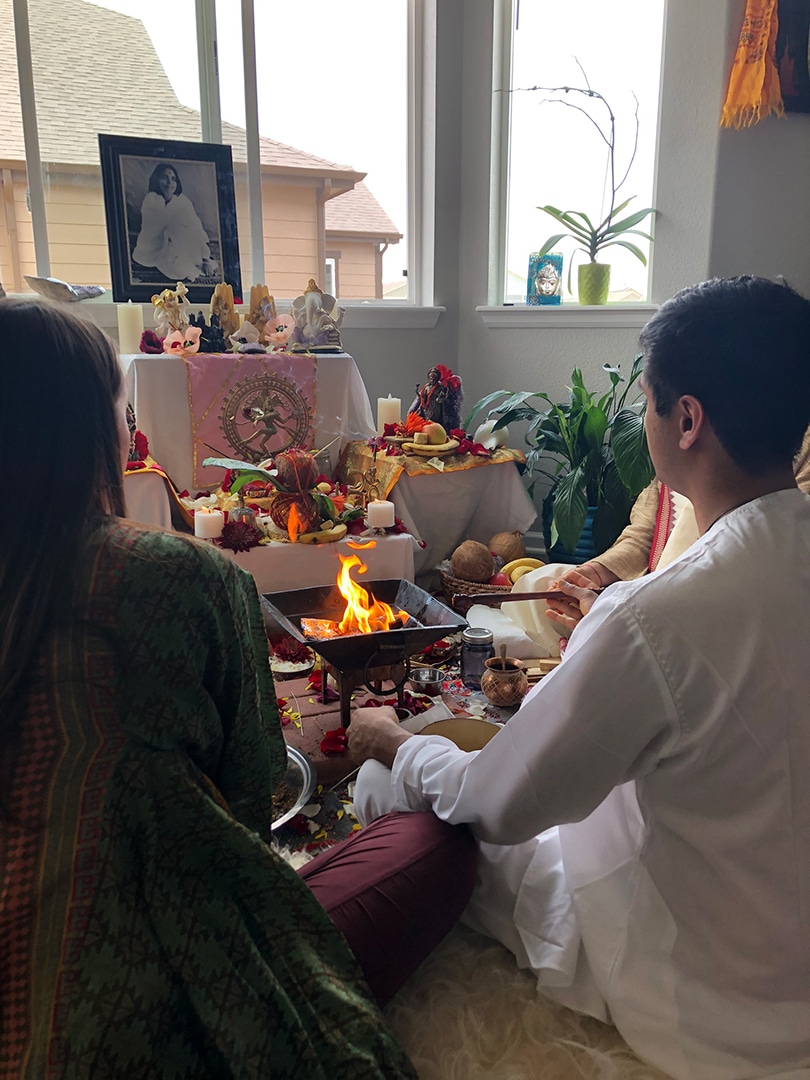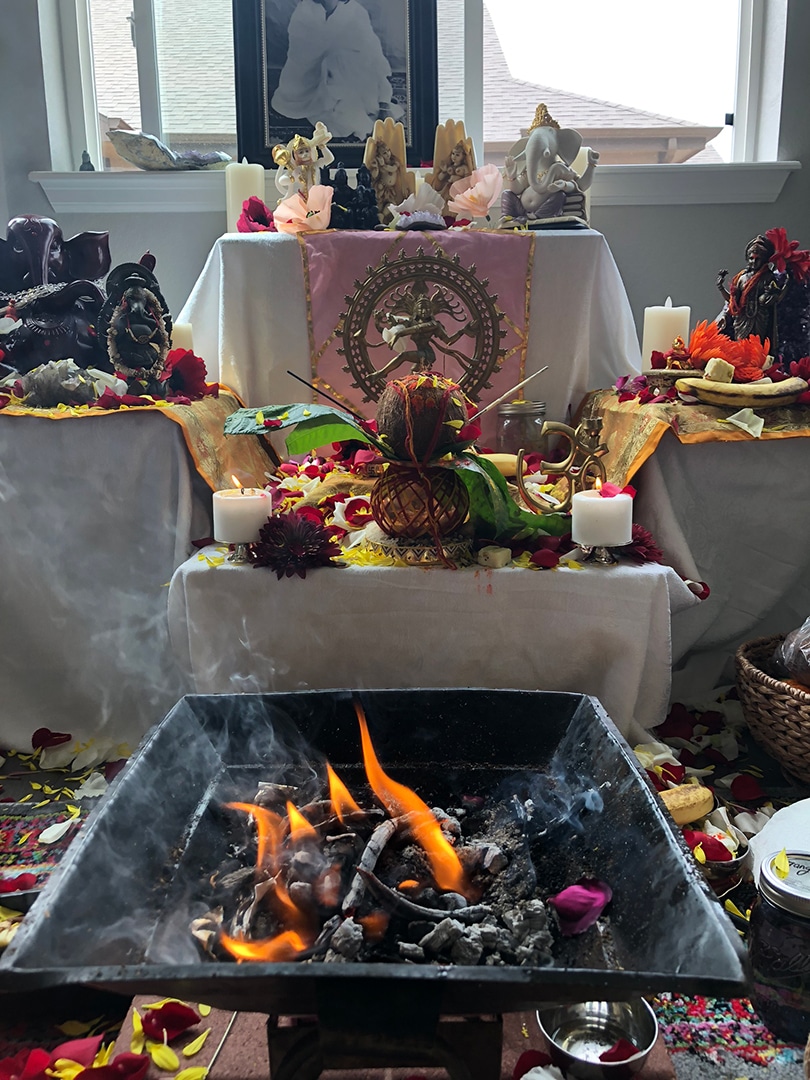News
Ancient Rituals for Modern Times: Puja and Yagna
On the day my son Kabir closed on his new house, it was his birthday and also the fourth day of the Hindu festival of Navratri, which is Laxmi’s day, the goddess of abundance. Navratri, a Hindu festival of nine nights, occurs in spring and autumn and honors Durga, Laxmi, and Saraswathi, three aspects of the same goddess called Shakti, for external and internal purification. We ask to release all that is not appropriate anymore for our highest good.
This, I decided, was an auspicious day to have a puja to celebrate these events in an offering of gratitude for all the abundance and grace received. Puja is a Hindu ritual that involves worship by physically offering fruits, flowers, sweets, and grains to honor your chosen deity or celebrate a milestone or other significant event in a home or temple with fire, or Agni, god of fire, as the divine witness.
The fire ritual, called yagna, uses fire as the divine witness or bridge between earthly and divine realms. The intense heat and life force of fire purifies, burns, and destroys all impurities and carries the intention and goals of our messages and our physical offerings to the divine realms in the form of smoke. In return, we receive grace and blessings of the divine from the heavens.
Through the medium of these ancient rituals, we humans attempt to connect with our higher divine essence or god self, which means we sacrifice our ego, which is involved in self-absorption and self-glorification offered in the fire as svaha for the process of transforming our lower self into a higher self. Through this ritual, we nourish both ourselves and the unseen realm of the divine.
